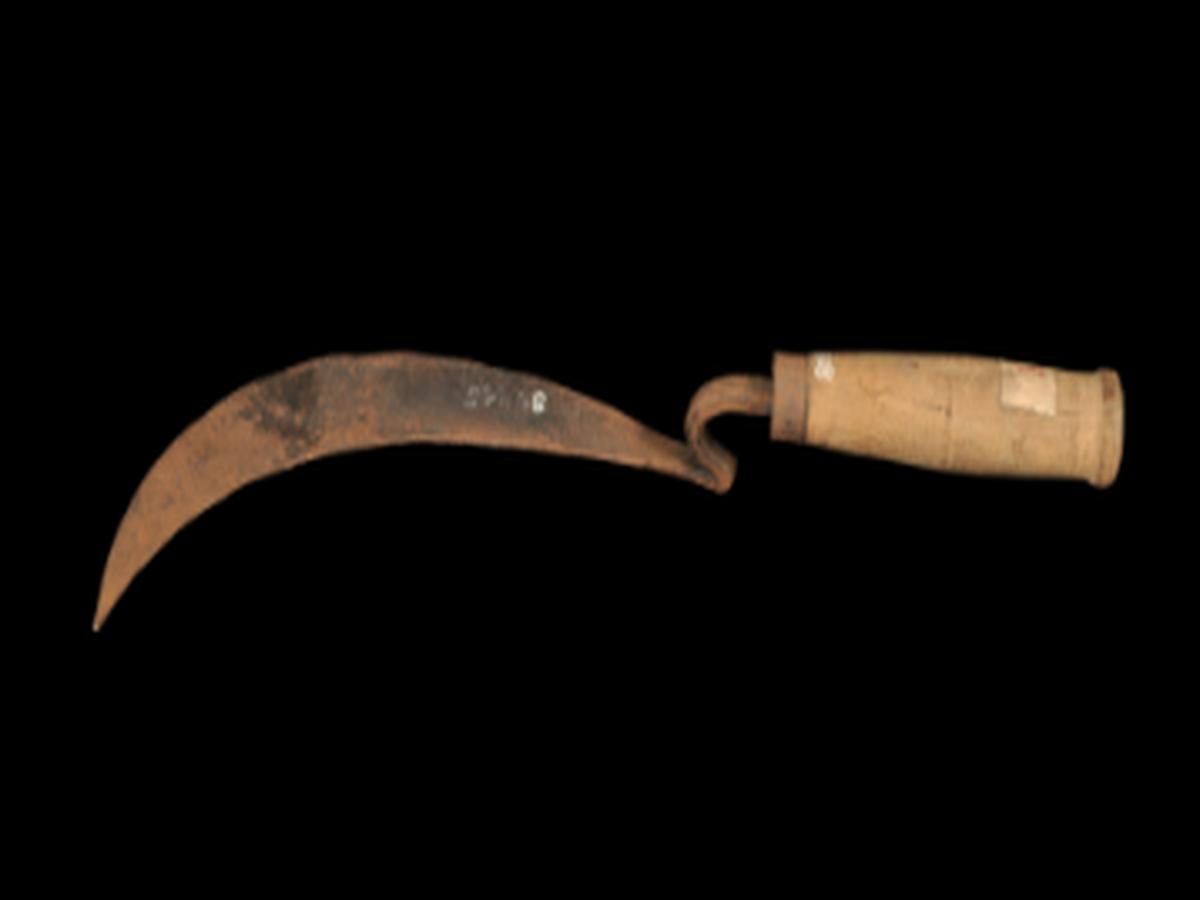State
Tribe Name
Art Type
short description
This scythe comes from the culture of the Santal tribe. It signifies a thing as much as it does craft; practicality is colonization.
Thumbnail

Filter Postion
Left
Filter Background
Off
Theme
Filter Header Image

content
Image

description
This scythe comes from the culture of the Santal tribe. It signifies a thing as much as it does craft; practicality is colonization.
The Santal community, one of the largest Adivasi groups in Eastern India, lives in such places as Jharkhand, West Bengal, Odisha, and Bihar. Agriculture is one of the mainstays of their survival; daily, this sickle gets its utility in their farming activities.
The sickle consists of two parts-a semi lunar shaped iron blade and a finely crafted wooden handle. The blade is forged with a tang, which fits into the handle and is held by an iron ferrule. The iron ferrule joins the two parts and signifies the strength of the connection between them. The handle has interesting engravings on it in the shape of three decorative rings which are bulbous at the butt end for easy grip and added beauty. More than just a farming instrument, it embodies the profound relationship of the Santal people with the land they cultivate. It stands as a testimony to the indigenous knowledge of metallurgy and woodwork treasured by the community through generations of artisan families Such sickles may not be mass produced; rather than being found all over the country, it is made by a local blacksmith thus giving it individuality.
The Santal community, one of the largest Adivasi groups in Eastern India, lives in such places as Jharkhand, West Bengal, Odisha, and Bihar. Agriculture is one of the mainstays of their survival; daily, this sickle gets its utility in their farming activities.
The sickle consists of two parts-a semi lunar shaped iron blade and a finely crafted wooden handle. The blade is forged with a tang, which fits into the handle and is held by an iron ferrule. The iron ferrule joins the two parts and signifies the strength of the connection between them. The handle has interesting engravings on it in the shape of three decorative rings which are bulbous at the butt end for easy grip and added beauty. More than just a farming instrument, it embodies the profound relationship of the Santal people with the land they cultivate. It stands as a testimony to the indigenous knowledge of metallurgy and woodwork treasured by the community through generations of artisan families Such sickles may not be mass produced; rather than being found all over the country, it is made by a local blacksmith thus giving it individuality.
Image Mode
landscape
promoted
On
Verified
Off
